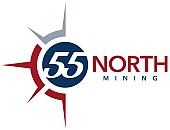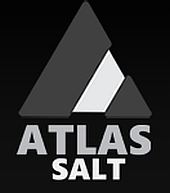 Alianza finds two new soil anomalies at Haldane
Alianza finds two new soil anomalies at Haldane
2018-09-24 12:18 ET – News Release
Mr. Jason Weber reports
ALIANZA EXTENDS POTENTIAL STRIKE LENGTH OF MT HALDANE VEIN SYSTEM TO 3.5 KM, HALDANE SILVER PROJECT, KENO DISTRICT, YUKON
Alianza Minerals Ltd. has released the results of the 2018 field program at the high-grade Haldane silver property in Yukon. Results include the identification of two new large silver-lead-zinc soil anomalies and doubling the strike length of the Ross anomaly. This program successfully highlighted the potential of the Haldane property to host new high-grade silver targets. “We are very pleased with our progress at Haldane in our initial field program. The development of the Ross anomaly, almost two kilometres along strike to south of the Mount Haldane vein system, shows that it may have significantly longer strike potential than what was previously recognized,” stated Jason Weber, PGeo, president and chief executive officer of Alianza. “We are eager to follow up on these results, in conjunction with anomalies identified in new areas of the property this year. Our efforts will focus on refining these targets for further work and drilling in 2019.”
2018 exploration program results
A total of 1,195 soil samples and 55 rock samples were collected predominantly in areas that had no previous or recent sampling, testing possible mineralized faults and lineaments outside of the relatively well-known Mount Haldane vein system. The Bighorn anomaly is a new target based on anomalous soil geochemistry located approximately 2.8 kilometres west of the Mount Haldane vein system. The anomaly stretches approximately 750 metres north-south by 150 metres to 250 metres east-west in a previously unknown area for mineralization. The anomaly contains up to 1,240 parts per million lead in soil, the highest result outside of the Mount Haldane vein system, supported by greater-than-98th-percentile silver results. No significant mapping or prospecting has been done in the area to date. The orientation of the anomaly is consistent with the northerly trend of most of the mineralized structures on the Haldane property. The anomaly straddles the main access road on the property in an area of poor bedrock exposure.
The Ross lead-zinc-silver soil anomaly was extended to 600 metres in length, doubling the known strike length with anomalous results open to north. Soil results also suggest a second, parallel mineralized zone 100 metres to 150 metres east. A lack of outcrop in this area hindered evaluation of the Ross anomaly on surface. A single 65-metre-long, east-west-oriented trench excavated near the south end of the anomaly failed to reach bedrock (over four metres in depth). Nonetheless, soil samples at five-metre intervals along the trench returned highly anomalous results, possibly reflecting proximity to buried mineralization, including over 1,000 parts per million zinc, for the eastern 25 metres. Results for lead range up to 1,455 parts per million in this section, potentially indicating a bedrock source of mineralization at depth. The Ross anomaly is situated 1.8 kilometres south on strike from the Mount Haldane vein system and the presence of multiple mineralized structures suggests it could be the extension of the vein system. This would give the Mount Haldane vein system a strike length of at least 3.5 kilometres.
On the north side of the property, soil sampling delineated a narrow, 1,000-metre-long lead-silver-tin-zinc anomaly where sampling in mid-1960s detected scattered anomalous lead-zinc results. The anomaly is continuous from the north side of the grid before disappearing to the south, where it meets glacial and fluvial material near North Star Creek. The extent of the anomaly is dominated by large quartzite boulder float with minimal outcrop and mapping detected minor alteration and mineralization along the anomaly. However, mineralization would likely be recessive and buried by the boulders. Significantly, the anomaly trends toward the Strebchuk lead-silver showing, 700 metres farther south, where galena-siderite mineralization occurs in a fracture zone in quartzite.
Another new anomaly, the Firetower anomaly, consists primarily of arsenic-antimony-zinc-gold with local tin and is not characterized by strong silver geochemistry. It may be indicative of intrusion-related gold mineralization that is known to occur on the property.
Haldane silver property
The 8,579-hectare Haldane property is located 25 kilometres west of Keno City, Yukon, in the western portion of the Keno Hill silver district, where companies such as Alexco Resource Corp. and Metallic Minerals Corp. are currently exploring. Notably, the access road to Victoria Gold Corp.’s Eagle gold mine crosses the northern portion of the property. Mineralization in the district consists of structurally controlled, silver-bearing veins. Silver production began in the Keno district in 1913, with over 200 million ounces of silver produced through 1989. Production statistics from the Yukon government’s Minfile (2003) state that 4.87 million tonnes were mined at an average grade of 1,389 grams per tonne silver, 5.62 per cent lead and 3.14 per cent zinc in that time.
Mineralization at Haldane consists of galena, sphalerite, tetrahedrite and pyrargyrite, with gangue of manganiferous siderite and quartz in veins, hosted within Keno Hill quartzite in proximity to the Robert Service thrust. This mineralization and setting bear a strong resemblance to the main Keno Hill deposits.
The north-trending Mount Haldane vein system (MHVS) is the main target area on the property, where initial exploration dates back to 1918. Early workers hand sorted ore from underground workings at the Middlecoff zone in 1918 and 1919, recovering a reported 24.7 tonnes of ore averaging 3,102 grams per tonne silver and 59 per cent lead. Later work at the Johnson zone recovered 2.1 tonnes of ore averaging 4,602 grams per tonne silver and 57.9 per cent lead in 1927. Little work was done on the property until the 1960s, when trenching and further underground development and drilling were conducted. Recent work, including prospecting, mapping, soil geochemistry and limited diamond drilling, has shown that the MHVS veins have excellent potential for strike extension, which has been corroborated by soil geochemical results from the 2018 program. Additional showings up to three kilometres east of the MHVS and new soil geochemical anomalies 2.8 kilometres west of the MHVS indicate the potential for other mineralized structures on the property. Maps and figures for the Haldane property can be found on the company’s website under the properties section.
About Alianza Minerals Ltd.
Alianza increases the chances of success in mineral exploration by using the prospect generator business model, focusing on gold and copper exploration in Latin America and Nevada.
Murray Jones, MSc, PGeo, of Equity Exploration Consultants Ltd. is a qualified person as defined by National Instrument 43-101. Mr. Jones supervised the preparation of the technical information contained in this release.
We seek Safe Harbor.
https://alianzaminerals.com/category/2018-news/






























